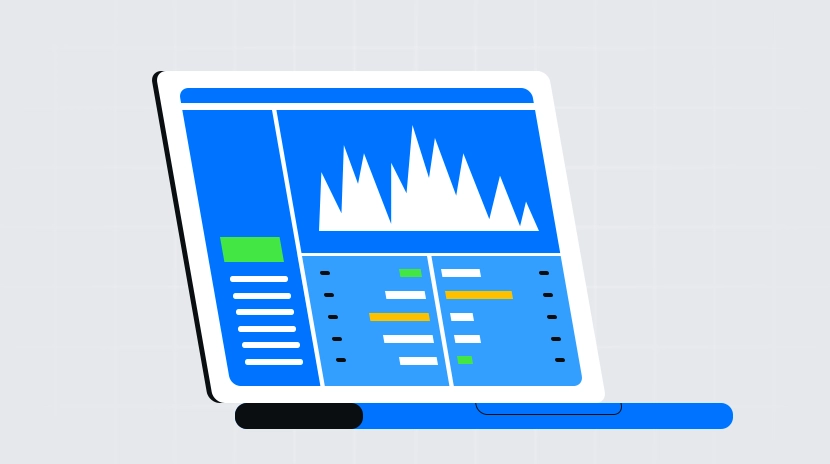Liquidity Tightness in the US Financial System: Emergency Fed Meeting and Repo Market Pressures
Introduction: Sudden Events Expose Systemic Risks
On November 12, 2025, during the Federal Reserve’s annual Treasury market conference, the New York Fed unexpectedly convened a closed-door emergency meeting with top Wall Street banks and executives, without any prior public notice. The meeting centered on liquidity pressures in the repo market and ways to encourage increased use of the Fed’s Standing Repo Facility (SRF) by financial institutions. The Financial Times broke the story on November 15, rapidly drawing market focus. The report emphasized that the meeting was a last-minute response to stress signals in the US financial system’s “pipeline,” with no advance public warning.
This incident is a symptom of persistent challenges in US financial system liquidity management. Since 2022, the Fed has been implementing Quantitative Tightening (QT) to gradually reduce its balance sheet and curb inflation. By late 2025, this policy’s side effects became apparent: shrinking bank reserves, heightened repo rate volatility, and indications of diminished Fed control over short-term funding costs. As of November 17, 2025, the Secured Overnight Financing Rate (SOFR) had repeatedly reached or exceeded the Fed’s ceiling, and the Federal Funds Rate was climbing.
This article leverages the latest data to analyze the roots, manifestations, historical context, and potential consequences of this liquidity squeeze. Through a data-driven review of Fed balance sheet trends, Treasury General Account (TGA) movements, and repo market metrics, we reveal the structural vulnerabilities in the US financial system. All data are sourced from official Fed reports, New York Fed publications, and leading financial media as of November 17, 2025.
Underlying Causes of Liquidity Stress: The Multi-Faceted Squeeze of QT
The US financial system’s liquidity hinges on the Fed’s monetary policy toolkit, with QT now the chief source of stress. Since June 2022, the Fed has passively trimmed its balance sheet by roughly $95 billion monthly, mainly by letting US Treasuries and mortgage-backed securities (MBS) mature without reinvestment. As of November 12, 2025, total Fed assets had dropped from about $9 trillion to $7.2 trillion, with Treasury holdings at $4.193 trillion. This contraction has extracted approximately $1.8 trillion in liquidity from the system, directly eroding bank reserves—the heart of the monetary base.
Meanwhile, the Reverse Repurchase Agreement Facility (RRP) is losing its potency as a liquidity buffer. RRP enables money market funds and other institutions to park excess cash at the Fed for a stable return. During Quantitative Easing (QE), the RRP balance peaked at $2.55 trillion (December 2021), soaking up surplus liquidity. But as QT proceeds, RRP balances have steadily declined. By November 12, 2025, RRP had fallen to $1.82 trillion, down about 13% from $2.1 trillion in July. This drop signals less excess capital in the system: institutions now have less idle cash for RRP and seek better yields elsewhere.
Compounding the stress is the rapid growth of the Treasury General Account (TGA), the US Treasury’s checking account funded by tax receipts, debt issuance, and Fed transfers. In early 2025, the TGA balance surged from around $364 billion (July) to $940 billion (November 12)—a net increase of $576 billion. This expansion directly drained an equal amount of reserves from the banking sector, as funds raised by Treasury issuance first flow into the TGA, reducing private sector liquidity. For FY2025 (through October), the TGA’s average balance reached $850 billion, up 28% year-over-year.
Massive federal deficits further amplify this impact. The FY2025 deficit is projected at $1.78 trillion—about 6.5% of GDP, far above pre-pandemic levels. To fund the shortfall, the Treasury will issue roughly $2.3 trillion in new debt (both bills and bonds), raising the TGA and boosting Treasury demand. In Q4 2025, expected borrowing is $590 billion with a cash target of $850 billion. These factors have slashed bank reserves from about $3.2 trillion at 2024’s end to $2.9 trillion in November 2025, dropping the reserve-to-GDP ratio from 12% to 10.5%.
QT aimed for a smooth transition under the “Ample Reserves” framework—enough reserves to ensure stable, low-volatility funding markets, but not so much as to fuel inflation. Yet 2025 data show this approach is being tested: sliding reserves are driving up funding costs, much like a reservoir running low and straining the supply pipeline.
Interest Rate Signals: SOFR and Federal Funds Rate Move Higher
The clearest sign of liquidity stress is abnormal swings in short-term interest rates. SOFR, the benchmark for the $3.1 trillion repo market, reflects overnight borrowing costs secured by Treasuries. The Fed manages SOFR via an interest rate corridor: the floor is the RRP rate (currently 3.80%), the ceiling is the SRF rate (4.00%). Normally, SOFR trades within that band.
Since October 2025, however, SOFR has repeatedly matched or exceeded its ceiling. On November 14, SOFR closed at 4.25%—27 bps above the October average (3.98%)—and remained above 4.00% for six straight sessions. This isn’t a seasonal effect (such as quarter-end tax flows), but rather ongoing strain: the 10-day SOFR-RRP spread has widened from 5 bps to 15 bps, showing cash suppliers are demanding higher rates.
The Effective Federal Funds Rate (EFFR)—the benchmark for unsecured overnight interbank lending—is also tightening. In October, EFFR averaged 4.09%, then fell to 3.86% in early November after the Fed’s 25 bps rate cut (target range: 3.75%-4.00%). But on November 12, EFFR rose to 3.98%, just 2 bps below the ceiling and 18 bps above the RRP rate. In contrast, EFFR was steady at a 4.33% median in early 2025, highlighting the Fed’s waning grip on unsecured markets.
These rate surges are driven by supply-demand imbalances: when reserves are tight, large cash-rich institutions can dictate prices, pushing rates toward their upper bounds. New York Fed data shows daily repo volume jumped from $1.2 trillion to $1.4 trillion since September, with hedge fund borrowing soaring to $3 trillion. Basis trades, where hedge funds arbitrage futures and spot price spreads, now total $1.8 trillion, mainly financed with repos. As repo rates rise, these highly leveraged strategies (50:1 to 100:1) face margin call pressures, amplifying volatility.
Historical Echoes: Repeating the 2019 Repo Crisis?
Today’s scenario strongly resembles the September 2019 repo crisis. At the time, the Fed’s QT was ending, bank reserves fell from $2.3 trillion to $1.4 trillion, and the TGA rose from $500 billion to $700 billion. SOFR spiked to 10% (900 bps above EFFR), forcing the Fed to inject liquidity and resume QE.
Parallels in 2025 are clear: QT has cut reserves by a similar amount ($300 billion), TGA expansion is comparable ($600 billion), and RRP has dropped 30% from its peak. The differences are inflation and deficit size: inflation is now 2.8% (November), below 2019’s 2.0%, but the deficit is much larger (7% of GDP vs. 4.6%). If stress persists, markets could again face “flash” liquidity shortages, especially at quarter-end (like December tax dates).
The Fed, however, has adapted. In 2021, it launched the SRF as a permanent backstop to reduce stigma. Yet in 2025, SRF usage remains modest: a $50.35 billion peak on October 31, averaging just $20 billion in November—far below the hundreds of billions deployed in 2019. This shows institutions’ reluctance: concerns about signaling distress, and the 4.00% cap not being attractive enough for proactive borrowing.
Fed Statements and Emergency Actions: Indications of Policy Shift
Fed officials have signaled a need to recalibrate liquidity management. On October 14, 2025, Chair Jerome Powell stated, “Liquidity conditions are beginning to tighten, and repo rates are rising.” He indicated QT may be nearing its end, with reserves moving from “ample” to “sufficient.”
On October 31, Dallas Fed President Lorie Logan warned that repo rate swings are lifting the federal funds rate; while daily volatility is sharp, the overall upward trend is significant. She suggested asset purchases may be needed if stress persists. That same day, the Fed cut rates by 25 bps, though Logan dissented due to elevated inflation (core PCE at 2.6%).
New York Fed SOMA Manager Roberto Perli declared on November 12, “Reserves are no longer ample.” At the Treasury conference, he highlighted widening SOFR spreads and rising SRF usage as clear signals of reserve scarcity, predicting the Fed may soon resume asset purchases.
These events led to the November 12 emergency meeting. New York Fed President John Williams met with 24 primary dealers to gather SRF feedback. The meeting stressed removing usage stigma and encouraging proactive SRF borrowing under repo stress. Bloomberg reported dealers warned that, absent stronger intervention, the $12 trillion repo market could face even greater volatility. The next day, the New York Fed released charts showing hedge fund repo borrowing hit $3 trillion, a 15% jump since September.
This series of actions signals the Fed’s shift from observation to intervention, while carefully avoiding public signals of crisis to prevent panic.
Potential Risks and Market Ripple Effects
If liquidity stress worsens, domino effects may follow. The repo market anchors Treasury pricing; higher costs push long-term yields up—on November 17, the 10-year Treasury yield rose to 4.35%, up 20 bps from October’s high. Leverage amplifies risk: about 70% of the $1.8 trillion in basis trades is financed with repos. If SOFR stays above 4.00%, hedge funds may face forced unwinds, triggering Treasury sell-offs.
Stock markets are already volatile: the S&P 500 has fallen 2.5% since November, with tech stocks leading losses amid liquidity concerns. The US Dollar Index (DXY) hit 105, reflecting a flight to safety. Bond market basis has widened, with futures-spot spreads at 15 bps.
Broader impacts include tighter interbank lending feeding through to credit markets: small business loan rates have climbed to 6.2%, and consumer spending is slowing. Globally, emerging market capital outflows may accelerate; if the Fed restarts QE, global liquidity distortions could intensify.
The Fed could ease risks by: (1) slowing QT, lowering monthly reductions to $50 billion; (2) raising the SRF cap or reducing stigma; (3) executing temporary reserve injections, as in 2019. In extreme cases, QE could inject hundreds of billions, but with inflation at 3.0%, policymakers face tough choices.
Conclusion: Balancing Tightening and Stability in Policy Decisions
Liquidity stress in the US financial system stems from QT, TGA expansion, and deficit financing. Upward moves in SOFR and EFFR are warning signs. The Fed’s emergency meeting marks a policy turning point—from tightening to fine-tuning for market stability. Historical lessons show timely action can avert crisis, but today’s high-debt, high-inflation environment means any stimulus must be weighed carefully.
Going forward, markets should watch reserve levels (target: $2.5–$3 trillion), SOFR spreads (20 bps alert), and SRF usage (over $50 billion). If stress eases, QT may wind down smoothly; if not, reopening QE is likely. This will test the Fed’s operational finesse and the resilience of the global financial system. Investors should follow November’s FOMC signals and Treasury debt issuance plans for pivotal clues.
All data as of November 17, 2025, sourced from the Fed’s H.4.1 report, New York Fed SOFR releases, and major financial media.
Statement:
- This article is reproduced from [Zhou Ziheng]; copyright remains with the original author [Zhou Ziheng]. If you have concerns regarding reproduction, please contact the Gate Learn team for assistance.
- Disclaimer: The views and opinions expressed are solely those of the author and do not constitute investment advice.
- Other language versions are translated by the Gate Learn team. Unless explicitly mentioning Gate, translation, dissemination, or copying of translated articles is prohibited.
Related Articles

Gate Research: 2024 Cryptocurrency Market Review and 2025 Trend Forecast

Altseason 2025: Narrative Rotation and Capital Restructuring in an Atypical Bull Market

Detailed Analysis of the FIT21 "Financial Innovation and Technology for the 21st Century Act"

Gate Research: Web3 Industry Funding Report - November 2024

The Impact of Token Unlocking on Prices
